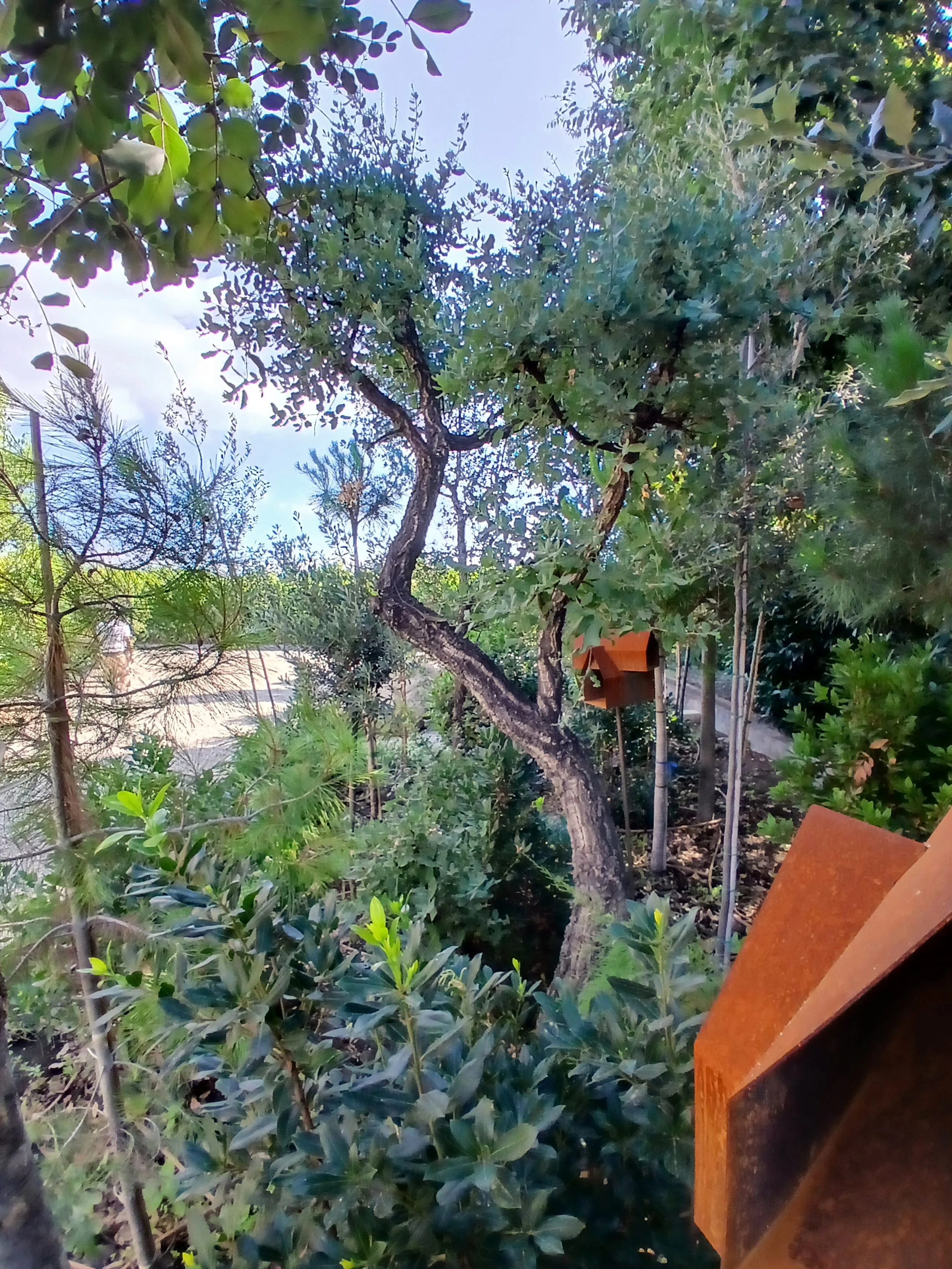LIVING FENCE
DATE: May 2025
ROLE: Oversaw the construction of the Living Fence garden by Asmita Raghuvanshy during the Radicepura Mediterranean Garden Festival.
NARRATIVE:
The Japanese Method at a Sicilian Festival
In this project, designer Asmita Raghuvanshy sought to experiment with an alternative to classic walls, fences, or hedgerows, envisioning a strip of woodland vegetation inspired by the method of Japanese botanist Akira Miyawaki.
I was entrusted with the complete supervision of the garden, overseeing every stage: from on-site management to planting decisions, from species selection to the final balance of quantities. Before beginning, I immersed myself in the Miyawaki method. You can read more about my reflections and discoveries on his ecological approach [here].
Adaptations on the Ground. Botanical Surprises.
The main difference between the original method and our implementation lay in the size of the plants: Miyawaki starts with small seedlings, while we had fully developed trees, often with wide canopies and substantial bulk. The only path forward was to let the plants guide us. As each arrived on site, I decided its ideal placement, striving to maintain overall balance while honoring the soul of the project: variety, layering, and harmonious spacing (roughly 60–80 cm).
Among the garden’s stars were a cork oak (Quercus suber) with a gracefully inclined trunk—a living work of art—a European hackberry (Celtis australis), and a three-trunk carob tree (Ceratonia siliqua) almost emerging from the soil like a sculpture. Surrounding them were bay laurel (Laurus nobilis), narrow-leaf mock privet (Phillyrea angustifolia), mastic (Pistacia lentiscus), tamarisk (Tamarix gallica), and tender young olives (Olea europaea), Aleppo pines (Pinus halepensis), and stone pines (Pinus pinea). A delightful surprise was the dwarf palm (Chamaerops humilis), which I later discovered is the only palm species native to Sicily.
Along the edge closest to the garden boundary, we planted lavender (Lavandula angustifolia), santolina (Santolina chamaecyparissus), and red valerian (Centranthus ruber), a species I had often encountered during my travels along the cliffs and old walls of Mount Etna—but here had to source from Tuscany, as it was unavailable commercially in Sicily. And then the acanthus (Acanthus mollis), initially vigorous but later struggling—perhaps affected by powdery mildew, or simply overwatered.
Final Touches
The last details were a tribute to the landscape: birdhouses in corten steel, slowly deepening in rust over time; a large stone salvaged from a warehouse; and tuff stones marking the edge of the woodland.





